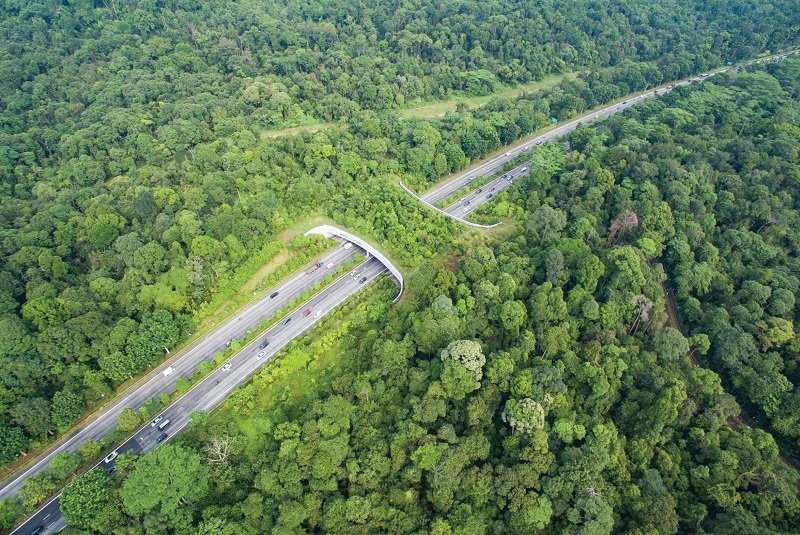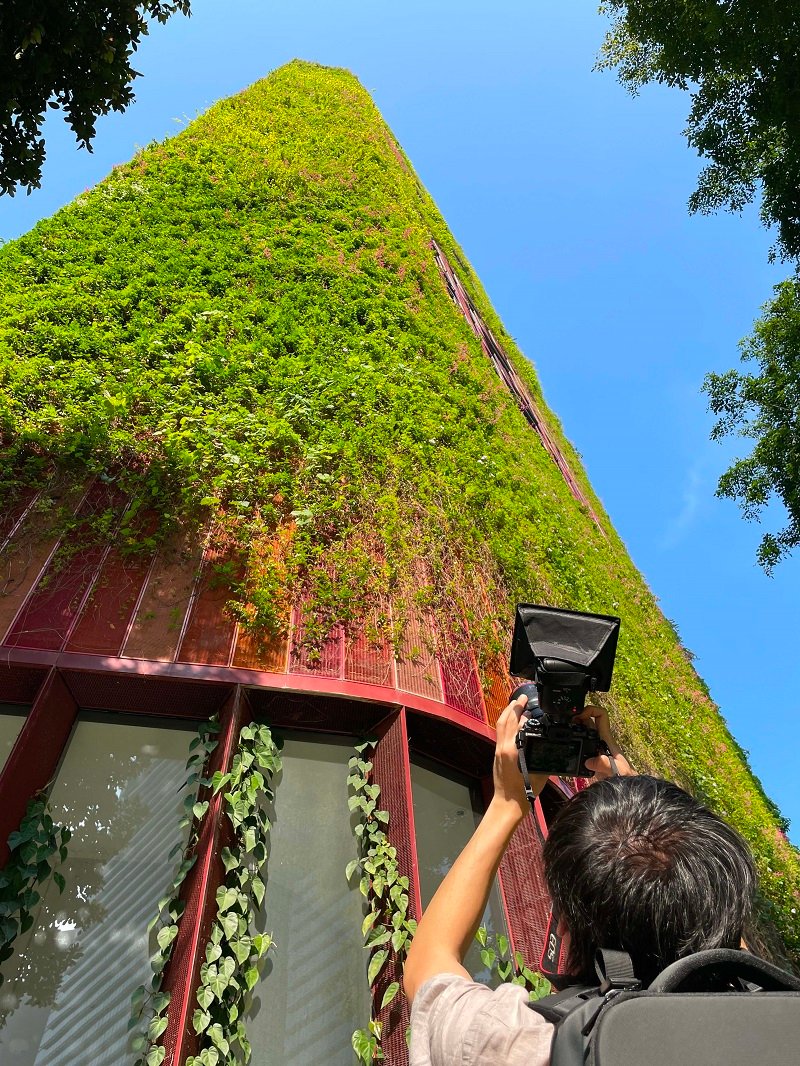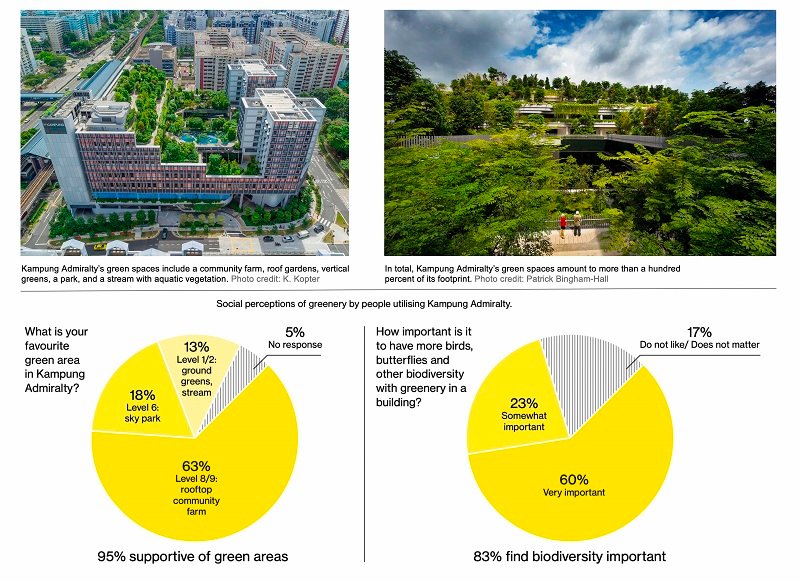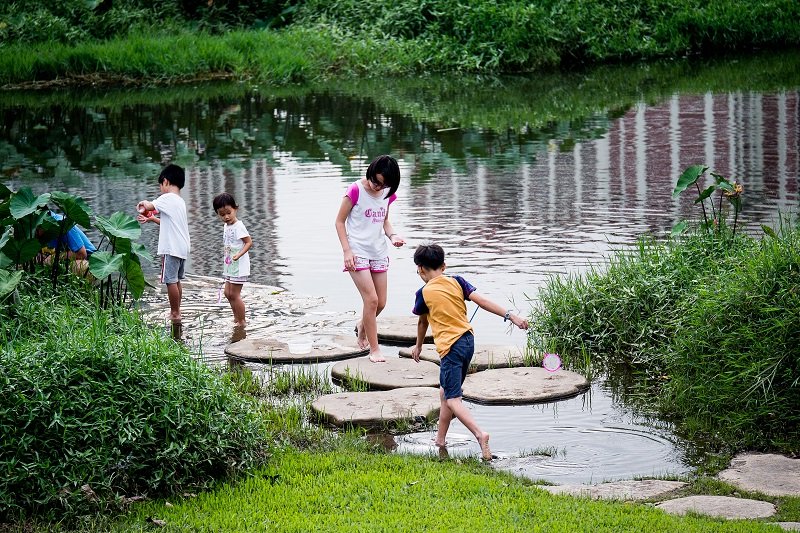Designing with nature is not just for architects and designers – ecologists have a key role in creating self-sustaining and resilient natural ecosystems and communities. Find out what it means to be ‘nature’s architects’ from Dr. Anuj Jain, Founding Director of ecology and biomimicry design firm, bioSEA.
Anuj: I grew up in a very built-up environment but always loved exploring the natural environments around us. I would often visit the park that was close to my home. I distinctly remember walking around my school which had very large trees and appreciating its beautiful red flowers.
While studying engineering for my undergraduate degree, I also took up courses in biology. So, while I was an engineer in my earlier career focus, I was a naturalist in the weekends, where I attended nature talks and walks and volunteered with the Nature Society Singapore.

The Eco-Link@BKE over the Bukit Timah Expressway (BKE) lets animals cross safely between the Bukit Timah Nature Reserve and Central Catchment Nature Reserve, allowing wildlife to expand their habitat and increase their survival chances. Credit: Tong Tran Son.
What is the work of an ecologist like yourself?
Anuj: In many ways, ecologists speak for nature in the built environment in ways that architects, landscape architects and designers cannot. We understand
the flora and fauna around us, and the different types and levels of habitats and connections that enable them to grow and flourish.
An interesting aspect of ecological work is anticipating and predicting what kinds of animals and plants will benefit from a space that is designed with nature. We can also help provide insights and evidence on how we can design and build more effective habitats and ecological connections.

A bioSEA staff doing a field survey of the Oasia Downtown Hotel. Image: BioSEA.
Insights from our ecological work will be very helpful for architects, designers, planners, and others who are shaping our built environment.
You have advocated the need to create more buffer zones where city life and wildlife meet. Why is this important?
Anuj: Native forests in Singapore have very tall trees and many layers of dense vegetation. The forest floor is usually dark as little light penetrates through the dense vegetation. Contrast this with our urban environments which are usually much brighter, drier, windier, and noisier.
A lot of flora and fauna cannot adapt to such contrasting environments. Hence, the need for us to create buffers i.e. transition zones between forested areas and our urban spaces.
These zones are important in mitigating the stark contrast between the forested and urban areas. They ensure a sense of continuity for our flora and fauna. Such zones can vary in size and need not always be a forested area. They can be green, recreational spaces or even grass patches.
When designing with nature, what are important considerations to bear in mind?
Anuj: It is important to bring in ecologists early in the design or planning processes for developments that aim to integrate nature or for projects that are located close to nature areas. This ensures that nature is a key consideration for such projects and efforts.
In designing developments with greenery, it is important to allocate a fair amount of space for greenery and importantly of the right kind. Kampung Admiralty, that has housing for the elderly together with a mix of public facilities and other services, is a good example of a development that is well-integrated with nature. Its green spaces amount to more than a hundred percent of its footprint. There is greenery on every floor. These green and other community spaces are large, continuous, well-connected, with a variety of fruit trees and medicinal plants that are also easily accessible for the elderly and community.

Surveys show that people are supportive of the lush greenery and the presence of rich biodiversity in developments like Kampung Admiralty. Image: BioSEA.
Based on the environmental audits that I’ve done so far for Kampung Admiralty, its lush greenery and landscaping attracts more wildlife as compared to the nearby parks. Over time, we have also developed a typology of building integrated greenery that offer maximum benefits for nature and climate.
Anuj: We need to build up our knowledge and a culture in support of a more self-sustaining and regenerative natural landscapes. For example, instead of focusing on just having a clean and ornamental pond that benefit few native species, we should focus on having ponds that have a complete ecological system backed up by a traditional mechanical system.
The ecological system brings back the natural cycles of predation such as dragonfly and frogs that eat mosquitoes thereby reducing our reliance on artificial fogging to control mosquito populations. The mechanical system provides a backup in cases when ecological populations fluctuate, thereby ensuring that water is pumped, aerated and filtered. The rich ecology will create a pond that benefits more flora and fauna especially native species, sequesters more carbon and in the long-run costs less to maintain. This will eventually help build up our environment’s natural resilience.
It is also about shifting our mindsets. Very often, we want to see and experience greenery and nature but in a more sanitised way. Some people like butterflies but don’t want caterpillars. Or that they welcome birds but do not want them to leave poo on their balconies.

Kids playing at the Bishan-Ang Mo Kio Park.
I think we need to teach our children and change our own mindsets to better understand and embrace all aspects and facets of nature around us. How about letting our kids play barefoot on grass in the park and come back home with their hands and feet covered with mud? For my kid, that’s a typical day.
Shaping an endearing city: “When enough is enough” – Dr. Anuj Jain was featured in the Singapore Pavilion for the 2023 18th International Architecture Exhibition – La Biennale di Venezia. Based on the theme of “When is enough, enough”, the pavilion explores the more intangible qualities of designing and shaping a more endearing city, in creating connections, influencing change and providing more inclusive spaces. For more information about the Singapore Pavilion, go to https://singaporepavilion.sg/
Source: https://www.ura.gov.sg/Corporate/Resources/Ideas-and-Trends/Designing%20with%20nature


